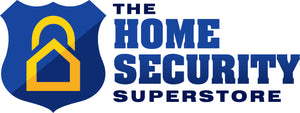You may have noticed that spy cameras are becoming more relevant in our day-to-day lives. You’ll see them outside of your favorite theater, at the entrance of your office building and by the front door of your neighbor’s home. Maybe you’ve even installed a few security cameras inside and outside of your own home.
If you haven’t used security cameras before, you might scratch your head over the increased use of cameras throughout cities and suburbs. Moreover, you may wonder how they work and why people are relying on them more and more.
Let’s take a look to better understand how spy cameras work and why homeowners and businesses use them all around the world.
Wireless Spy Cameras
Wireless spy camera systems are the most common type of general surveillance we see nowadays. Yet, “wireless” doesn’t mean a camera is entirely wireless. Wireless cameras will still need electricity to power on, so they’ll need to be plugged into an electrical system to properly operate. However, the “wireless” aspect comes in when talking about data transmission. Wireless cameras, including cameras with just video as well a spy camera with audio, as share data through internet transmission. The camera sends data to a receiver that uploads it to a cloud service or a server located within the local network.
These cameras often operate when triggered. That is to say, they are not recording—in a sort of “sleep” mode—until triggered by movement picked up by the camera’s motion-sensing capabilities. But there are some security cameras that will record at all times. What’s the difference between the two choices, and how are they helpful?
The decision to get a camera that records 24/7 versus a camera that only records when triggered by movement comes down to how you’re going to use this footage. If you’re using these cameras as a part of your general surveillance, say for your business, then it can be useful to record 24/7. This full-time surveillance can allow you to watch your assets and employees at all times. Footage can be stored aside on a server and regularly monitored by a security guard or internal management.
Security cameras that only record when triggered are most useful for home surveillance systems. Rather than storing 100s of Gigabytes of data on a dedicated storage server, you can limit the data you store by only capturing footage that matters. The only data you’ll keep is when a person or object breaks your camera’s line of sight, potentially capturing a criminal or burglar in the process of a crime.

How CCTV Cameras Work
Close-Circuit Television (CCTV) Camera Systems are useful general surveillance systems for homes and businesses. Best of all, CCTV camera systems work to reduce crime.
CCTV systems allow multiple cameras to be integrated into a singular system. This means that you can capture footage from numerous angles across a property to ensure there are no blind spots in captured footage.
You can easily feed CCTV systems back to a viewing station, too, which is important for businesses. Connected to a set of monitors, a security guard or manager can keep track of what is happening on the store floor in real-time and save footage of crimes committed on camera.
Most footage captured by CCTV camera systems tends to be stored on older systems rather than digital, cloud-based platforms. Methods used include recording straight to videotape or storing on a digital video recorder (DVR) system.

Spy cameras work wonders to protect both homes and businesses. As an eye in the sky, they can work to deter crime and capture incidents if they ever occur. All it takes is knowing which type of system, wireless or CCTV, is best for your home or business.
Don’t hesitate to find the right cameras if you’re considering installing a surveillance system. It will help protect you when it matters most. Visit the Home Security Superstore and browse our vast collection of spy camera products, including Nanny Cams.
Frequently Asked Questions
Depending on the type of security cameras you buy, spy cameras will either record 24/7 or capture footage only when movement is noticed in its field of view (FOV).
CCTV systems commonly store footage by recording it to videotape or DVR. Wireless cameras will upload footage to a server or cloud-based storage system.

